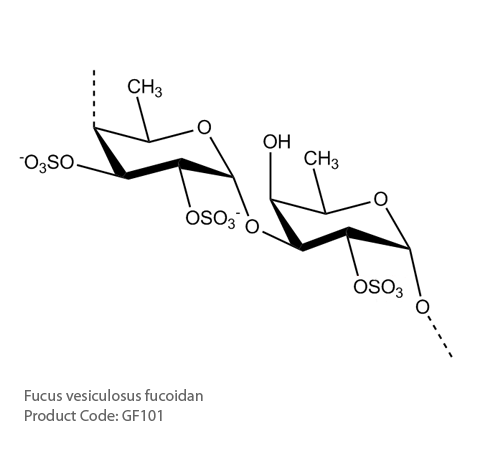Seaweed's Active Components
Various studies have stated different active components, dependent on the ailment. Brown seaweeds in particular have a medley of active components. The most extensively studied thus far include: phlorotannins (phenols), fucoxanthin, and fucoidan.
Ascophyllum nodosum has the highest phenol content, including pholorotannins/oligomers of “phloroglucinol”/1,3,5-trihydroxybenzene (Audibert et al, 2010). They are proposed to be antioxidants used in cosmetics and nutraceuticals (Apstolidis & Lee, 2010; Yangthong, Hutadilok-Towatana & Phromkunthong, 2009).
Phloroglucinol chemical structure. (Source: Wikipedia.org) |
Fucoxanthin, the xanthophyll which gives brown seaweed its colour, has also been extensively studied, especially with regards to obesity treatments (Jeon et al, 2010).
Fucoxanthin. (Source: Wikipedia.org) |
A popular component in current seaweed/drug research is fucoidan (aka: fucan, fucosan), which is a polysaccharide containing L-fucose and sulfate ester groups. Its structure and its subsequent biological activity vary according to species of brown seaweed (Li, Lu, Wei & Zhao, 2008). Fucoidan has been implicated in antioxidant, anticoagulant, antithrombitic, antiviral, immune system modulation, and lipid reduction activities (Pomin & Mourao, 2008; Wang et al, 2010; Li et al, 2006; Li et al, 2001).
Fucoidan. (Source: glycomix.co.uk) |
Typical Preparation of Seaweed
(Source: herbsgardenshealth.com) |
Typical preparation of herbal treatments (extracts or otherwise) vary per species. For adults, bladderwrack (Fucus vesiculosus) may be soft capsules containing alcohol extracts (dose: 200-600mg/day). Tablets are also used, while some preparations require “crude plant mixtures.” (NaturalStandard, 2009; NIH/NLM, 2010).





Will Brown seaweed extract help fight fat ?
ReplyDeletecancer prevention
https://seaweed.theperfectnutrition.com
ReplyDeleteThe best utilization of seaweed.
Good description, useful one. Thanks for sharing.
ReplyDeleteOrganic Cordyceps Supplement
Codyceps Extracts
Buy Fucoidan Extracts
Best Fucoidan Extracts
Fucoidan supplements
Buy Organic Cordyceps Supplement